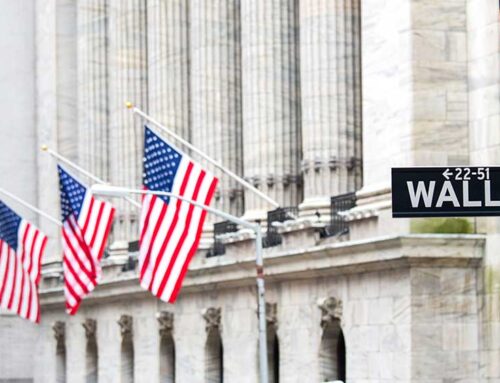I’m an Economist: 4 Bits of Investing Advice Amid Turbulent Trump Market
June 15, 2025
Since President Trump took office for the second time, the market has been on a wild ride largely due to implementation of mass tariffs, causing many Americans nearing retirement and those who have already stopped working to panic for their 401(k)s.
For You: Making This Common Investing Mistake? Experts Share the Easy (but Urgent) Fix
Powered by Money.com – Yahoo may earn commission from the links above.
Check Out: 6 Hybrid Vehicles To Stay Away From in Retirement
“I looked at my 401(k) this morning and in the last two days that’s lost $58,000. That’s stressful,” recent retiree Victor Fettes, 54, told NBC News. “If that continues, I can’t stay retired.”
With the market in continuous flux, Trump’s tariffs threaten to increase prices and inflation. And Americans are feeling financially strapped. Many are worried about their golden years and whether they should invest. While there’s no one size fits all answer, there are several things to consider, according to experts.
It’s scary to shell out money for investments when the market is uncertain. One benefit to investing during such economic instability is you can often buy stocks at a lower price and sell them at a higher cost later.
However, individual situations vary. Tracy Shuchart, Senior Economist at NinjaTrader, advised to take note of Russell Investments’ comprehensive analysis of 31 U.S. recessions from 1869 to 2018.
“Historical evidence strongly supports continued investment during periods of economic uncertainty, despite the counterintuitive nature of this approach,” she stated, referring to the data revealing 16 out of the 31 recessions produced positive stock market returns.
She explained, “Market timing presents significant challenges that argue against attempting to avoid volatile periods entirely and that Russell Investments’ research demonstrates beating a buy-and-hold strategy over 150 years would require correctly predicting 77% of market turning points — a level of accuracy that proves elusive even for professional investors.”
Looking to the past to see how the country endured previous economically challenging times can help forecast how future recessions will fare, and determine a financial path that will build long-term stability even during shaky times.
Discover More: 15 Investments Warren Buffett Regrets
A volatile market can create a lack of confidence when it comes to investing, but there are calculated systems that can work during turbulent times such as the dollar-cost averaging strategy. It involves investing a fixed amount in regular intervals, whatever the amount is.
According to Shuchart, this method “provides both mathematical and behavioral advantages during volatile markets.” She explained further that “this mechanism reduces the average cost per share over time, while eliminating the need for timing decisions.”
Amy Pridemore, a financial wellness instructor at Virginia Commonwealth University, agreed that dollar-cost averaging is the way to go. “This action allows individuals to create healthy savings behaviors regardless of current market trends,” she explained
Pridemore went on to say that “money will be invested when the market is down, money will be invested when the market is up — this ‘set it and forget it’ approach provides wins for investors all around.”
Another approach Shuchart recommended was quality focus — investing in companies with solid fundamentals, consistent profitability and a strong history of growth.
“Companies with strong balance sheets, consistent earnings, competitive advantages and experienced management teams typically demonstrate greater resilience during economic stress, and often emerge stronger when conditions improve,” she explained.
Quality focus can reduce the risk, while creating the opportunity for a potential big payout, according to The Economic Times.
Making a big financial decision under distress can lead to a shattering outcome, and cause you to leave money on the table. According to Shuchart, BlackRock’s analysis of S&P 500 performance from 2005 to 2024 demonstrated the severe consequences of missing market recovery periods:
-
Remaining fully invested: $717,046 (from $100,000 initial investment)
-
Missing the 5 best days: $452,884 (37% reduction)
-
Missing the 25 best days: $158,792 (78% reduction)
A rushed choice about financial matters doesn’t always end well. When making investment decisions, it’s vital to think long term.
“The economy has shown fluctuations and recovery,” Peter Reagan, financial market strategist at Birch Gold Group, stated. “It will continue to do so.” He explained, “Having investments that have shown their strength of preserving wealth across these fluctuations is something to remember before even considering selling any investments.”
Editor’s note on political coverage: GOBankingRates is nonpartisan and strives to cover all aspects of the economy objectively and present balanced reports on politically focused finance stories. You can find more coverage of this topic on GOBankingRates.com.
More From GOBankingRates
-
8 Common Mistakes Retirees Make With Their Social Security Checks
-
How Much Money Is Needed To Be Considered Middle Class in Every State?
This article originally appeared on GOBankingRates.com: I’m an Economist: 4 Bits of Investing Advice Amid Turbulent Trump Market
Terms and Privacy Policy
Search
RECENT PRESS RELEASES
Related Post




